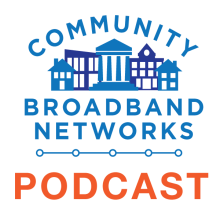DV Fiber and Vermont’s Bold Broadband Model - Episode 625 of the Community Broadband Bits Podcast

In this episode of the podcast, Chris interviews Steven John, Chair of the governing board of DV Fiber, Vermont’s Deerfield Valley Communications Union District. They discuss Vermont's innovative approach to broadband access through Communications Union Districts (CUDs)—municipally led collaborations designed to provide universal, high-speed Internet. Steven highlights the unique challenges of delivering fiber to Vermont's rural communities, including navigating tough terrain, limited labor resources, and old infrastructure.
They explore the success of DV Fiber, which has connected hundreds of customers while adhering to a mission of affordability and accessibility. Topics include partnerships with local companies, lessons learned from electrification history, the resilience of fiber networks, and strategies for overcoming competitive pressures. This conversation provides a valuable look at how public governance and private expertise can merge to achieve universal broadband, even in the most challenging areas.
This show is 33 minutes long and can be played on this page or via Apple Podcasts or the tool of your choice using this feed.
Transcript below.
We want your feedback and suggestions for the show-please e-mail us or leave a comment below.
Listen to other episodes or view all episodes in our index. See other podcasts from the Institute for Local Self-Reliance.
Thanks to Arne Huseby for the music. The song is Warm Duck Shuffle and is licensed under a Creative Commons Attribution (3.0) license



